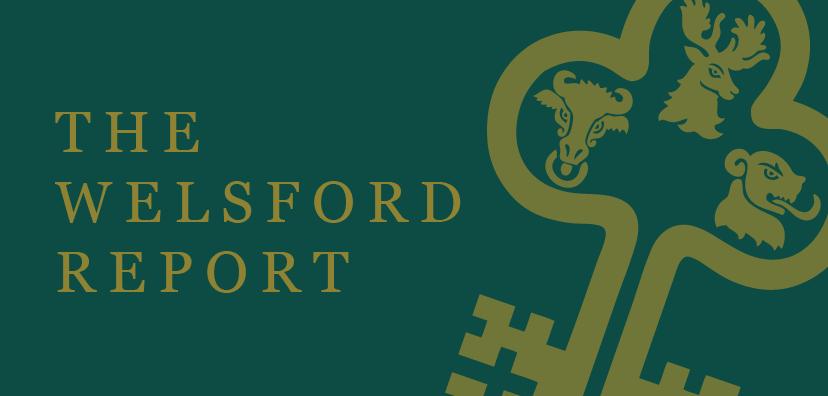This Christmas the Monopoly box has remained in the games cupboard. Most years we play Monopoly at least once. This year we found other games to play. Like ‘Drawful’, where we are given a title for a drawing that we then have to draw so everyone else can try to guess what the title was supposed to be. No arguments or loser tantrums and lots of laughs. Way better than boring old Monopoly with its private equity, asset management, infrastructure investment connotations that have a habit of making us all feel bad about ourselves and others. So far so good…
Crumbling Infrastructure?

I think we would all agree that Christmas is about families being together. For us this year was no exception with all our children managing to break away from their jobs and make their way back to the Island before Christmas Eve. For the most part they were transported by train and boat without serious delays and arrived home on time. The return journeys have proved less easy with the train operator running a creatively named ‘rail replacement service’, extending journey times by more than an hour so they can carry out essential repairs to the rail infrastructure. To add to the problem, fast passenger ferries have been cancelled due to storm Gerrit (are they running out of decent storm names?).
Why are Isle of Wight ferries so expensive?
As a result, our good bye conversations have turned to the subject of infrastructure disrepair and why it is that the train services are so poor in the UK and why are Isle of Wight ferries so expensive?
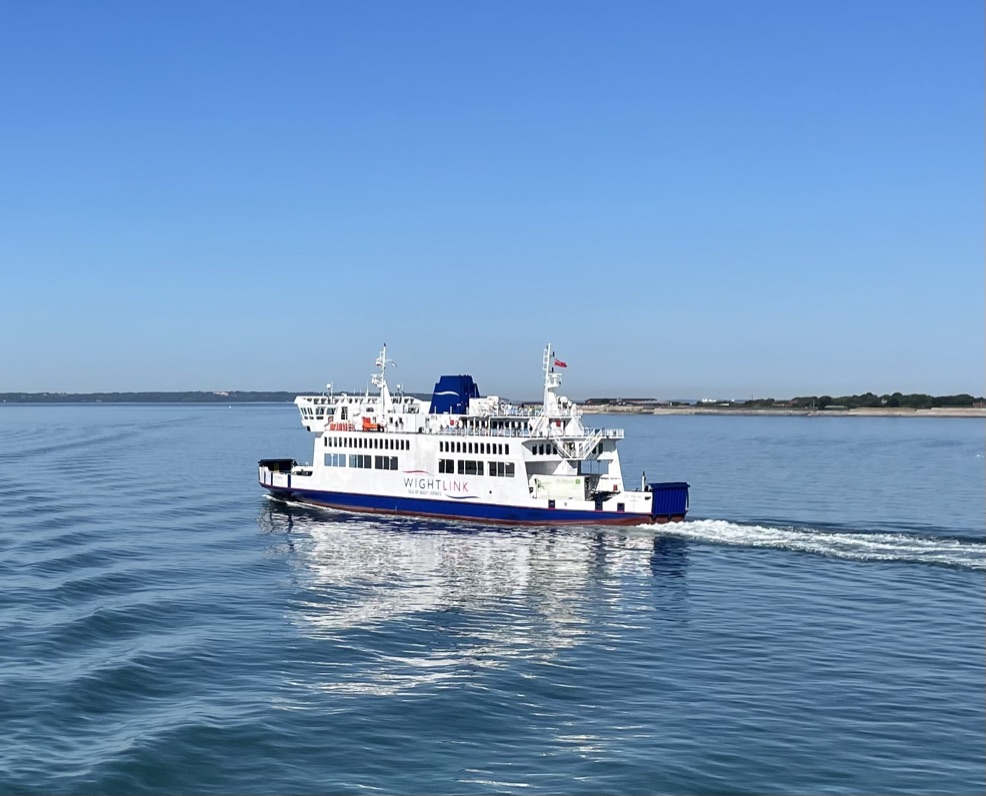
It is estimated getting to and from the Isle of Wight costs travellers roughly between 3 and 6 times what it costs to take a ferry to France, the Isle of Man, Ireland (North and South) or between Scottish Islands and the mainland. Why is our Island so disadvantaged? Would a tunnel help drive down costs because funding it would be very, very expensive. Surely it would cost as much as the ferry? Who knows? How is infrastructure funded? Is it the Government’s or someone else’s problem?
In my mind these discussions seemed to bear some relationship to an interview I’d listened to with an academic whose most recent ramblings about private equity investment in infrastructure projects have recently caught the attention of the media, hence the interview. Investing in renewable infrastructure sounds like a good thing, right? We do it in our Key to the Future portfolio and that aims to do good things. These are nice solid long term business models that develop and grow over time generating a reliable income stream that also grows. What’s not to like?
Offshore Private Equity
Well, it seems that Brett Christophers, a professor of human geography at the University of Uppsala, Sweden, disagrees, and perhaps with good reason. His book ‘Our Lives in Their Portfolios: Why Asset Managers Own the World’ cleverly robbed me of a great title for this piece. On reflection perhaps it saved me from myself as it’s very similar to another ‘neo-liberal system bashing’ book called ‘Treasure Islands – Tax Havens and the men who stole the world’ by Nicholas Shaxson, which charts the way that offshore havens (mostly former British colonies and protectorates) were established by the City of London during the post empire period to replace the colonial income stream that was being lost to independence as the British empire collapsed in the vacuum created by the cold war. Clever people these City folks.
Litany of publicly damaging cases
As we will see, these subjects are important to all of us because they affect our everyday lives, determining our standards of living across a wide range of services, many of which were, albeit briefly, publicly owned.
Professor Christophers explores a litany of publicly damaging cases in which private equity asset managers have exploited 40 years of political thirst for private ownership, principally in the US and UK, leaving customers, and the wider public, to pick up the cost of their profiteering. Christophers draws on the recent and well documented example of Thames Water which was owned by Australian Infrastructure giant Macquarie. Macquarie sold Thames Water a couple of years back for a handsome profit, but not before saddling it with some £2bn of debt, having taken vast dividends during their period of ownership, whilst failing to reinvest sufficiently in the water supply and sewerage infrastructure needed to keep the water flowing lawfully in both directions. Thames are obviously not the only ones, but they are on the point of going bust for which many are levelling the blame squarely at Macquarie.
Damagingly high dividends and uncoordinated services
Professor Christophers’ book focuses mostly on privately financed infrastructure projects such as rented housing, care homes, hospitals, car parking and the private ownership of public utilities. It makes pretty appalling reading with: private finance overseeing higher and higher charges to users of their infrastructure; damagingly high dividend payments that leave little room for reinvestment or capital expenditure on repairs and renewals; short term investment horizons that don’t match the long term needs of the customers or society and, in some cases, dangerous failings that result in the potential for risk to life and limb, as crumbling infrastructure is simply sold to the highest bidder.

It has led to services that compete with one another in such a way that we are left with incompatible and complicated systems, perhaps best demonstrated by the uncoordinated private provision of EV (electric vehicle) charging points. These each have their own payment systems and often require users to sign up to their own app or face higher tariffs. This is in complete contrast with the provision of conventional fuels for ICE (internal combustion engine) vehicles. Petrol filling stations all (globally) offer the same standardised fuel delivery system and payment is always by bank or credit card. You can even use cash when the shop’s open! Not so for EV’s. Why is this?
In most cases it would seem that privatisation has not been beneficial for anyone other than shareholders. Train operations in the UK being a prime example. As with train operating companies, private equity infrastructure shareholders are unlikely to be you or me because shares in these ventures are not listed equity, and can’t be bought or sold on a recognised stock exchange. They are mostly private limited companies and often based in offshore tax havens.
Positive impact but only for listed equity
Having delved into the murky world of private equity owned infrastructure, Christophers is about to publish a second book the involvement of private equity in renewables infrastructure and the likelihood is that he will evidence some equally unpleasant consequences for customers and society in general.
This may prove difficult for thoughtful sustainable impact investors like us, who are trying to make a real difference by supporting the transition to net zero. The Key to the Future model portfolio holds the shares of renewable energy investment trust companies that own solar and wind farms, battery storage and energy efficiency projects. We feel these are the most genuine way to produce direct positive impact. But it seems that you need to choose your infrastructure asset manager carefully or suffer the consequences of short termism, greed and destructive shareholder value maximisation. This leads to low rates of reinvestment in new projects and development which ultimately stifle any long term growth prospects for the infrastructure fund in which we have invested.
80% of US energy infrastructure is privately owned
It’s the part of the portfolio where we’ve been mostly focused on the financial benefits with the positive impacts speaking for themself. But do they? On balance we think they probably do. However, in a recent article in the New York Times, Professor Christophers has already started exploring the ramifications of President Biden’s environmentally focused Inflation Reduction Act and thinks it ‘will reshape the physical and economic landscape of the United States over the next decade, including in ways that might surprise a lot of people…A common belief about both the I.R.A. and 2021’s Infrastructure Investment and Jobs Act, President Biden’s other key legislation for infrastructure investment, is that they represent a renewal of President Franklin Roosevelt’s New Deal infrastructure programs of the 1930s. This is wrong. The signature feature of the New Deal was public ownership: Even as private firms carried out many of the tens of thousands of construction projects, almost all of the new infrastructure was funded and owned publicly. These were public works. Public ownership of major infrastructure has been an American mainstay ever since.’
I’m not so sure that’s true when it comes to energy. For the most part in the USA, energy infrastructure is privately owned. According to the US Cybersecurity & Infrastructure Security Agency, the US government body tasked with safeguarding the country’s critical infrastructure, ‘more than 80 percent of the country’s energy infrastructure is owned by the private sector, supplying fuels to the transportation industry, electricity to households and businesses, and other sources of energy that are integral to growth and production across the nation’. It’s pretty clear from the rest of what CISA says that the private sector is massively important to the US energy sector with the role of the state being to regulate and police the sector.
From laggard to leader
In a bid to ensure the USA moves from laggard to leader in the transition to net zero, The I.R.A. and it’s sister act the I.I.J.A. have set the policy framework for the next 10 years of investment in the US renewable energy sector. The budget for this is ringfenced and written into law and most of it will provide the subsidies to the privately financed renewable energy sector that have so far been granted to the equally privately financed fossil fuel based energy sector.
Nonetheless, this does not change the main thrust of Professor Christophers argument, which is that private equity asset managers are sucking the lifeblood from the infrastructure companies that they own. In many respects he is saying something that we have been saying for many years: fund managers often have objectives that are not aligned with investors objectives and in the case of private equity asset managers, not aligned with the long term strategic objective that should form an integral part in the development of critical infrastructure. With various infrastructure projects owned and operated by different companies, competitive practices and the maximisation of shareholder value are prioritised over longer term achievement of the overall strategic objective, which is to deliver an often vital service to end users and make sure that the service can continue to be delivered in the long term. That requires profits to be reinvested so the infrastructure can be maintained, renewed and developed. The decision to nationalise strategy industries after the end of the second world war and the decision to privatise in 1979 were both apparently aimed at the same objective, to achieve long term strategic infrastructure security. Which is more effective at achieving this is debatable.
A very political problem
This may all seem very political and it is. The political ideology that shaped the post war economy and in 1948 began the process of nationalising many previously privately owned industries was ostensibly socialist. What emerged during the 1970’s was essentially neo-liberalism, designed to return ownership to private businesses with an incentive to the voting public that was public share ownership. Arguably, this ideology has now returned us back to where we started in terms of customer dissatisfaction with the infrastructure being delivered.
The main difference, when it comes to private equity asset ownership is that the profits are syphoned off by a relatively small number of private shareholders who own and control the infrastructure. Whilst we need to recognise that they also take the risk, it is also true that in many cases the risk to shareholders is relatively low. Infrastructure assets deliver predicable income streams and often have captive markets where consumers are left with little choice but to pay up. Competition is not always evident.
1984 – a very dystopian year?
Prior to privatisation, profits were returned to the exchequer. Most people are unaware that nationalised industries were capable of generating profits even if this was not their main objective. As you will read (assuming you get that far!) Sealink (the ferry arm of British Rail) was loss making for many years but was profitable in 1979 and 1983, the year before it was sold to private equity. The whole point of privatisation was to make these businesses more profitable by exposing them to competition and enabling their shares to be owned by their employees and the wider public. According to Hansard (the parliamentary transcript) in 1984 the Government announced ‘it is the intention of Sea Containers Limited to bring their new company to the stock market and at that time they plan—and I have no reason to believe that they will depart from their plan—to offer the present 9,400 employees of Sealink an opportunity to buy into what will be their own company.” Lord Lucas of Chilworth may have had no reason to doubt this. However, as you will see, it never happened and private equity remains in control to this day.
Under constant attack
Perhaps it is a less controversial view these days, but not much time had elapsed between the nationalisations of the late 1940’s and early 1950’s to the privatisations of the early 1980’s. Thirty years is no time at all to recover from a bankrupting world war and public ownership of strategic infrastructure had little chance to prove itself one way or another. The nail in the coffin for public ownership was almost certainly the oil crisis of 1972 which led to the industrial relations disputes of the mid to late 1970’s. For many, neo-liberal political policy in the UK and USA appeared to be a reaction to strong collective bargaining in the US, Europe and the UK. Remember those winters of discontent? However, I would argue that the 1944 Bretton Woods agreement and the policies of left leaning economists such as John Maynard Keynes that led to infrastructure being publicly owned in 1948, were in any case under constant attack from right wing economists led by Milton Friedman and Friedrich Hayak.
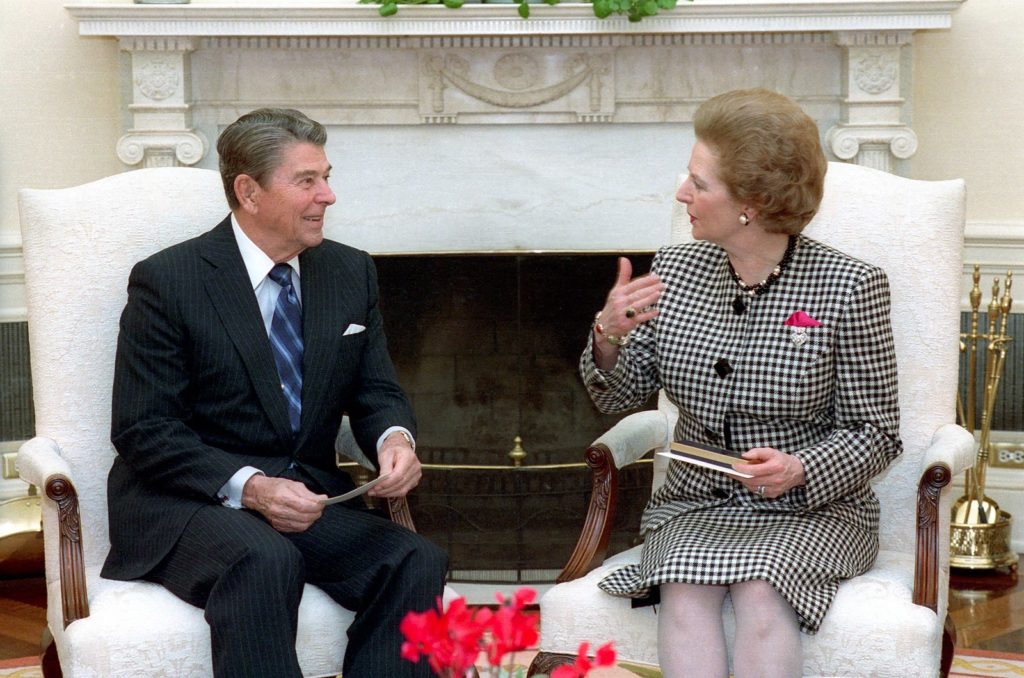
Their theories were eventually adopted and turned into political reality, by Ronald Regan and Margaret Thatcher during the mid-1970’s, culminating in election victories for Thatcher in 1979 and Regan in 1980, leading to sweeping changes entirely centred on privatisations of publicly owned infrastructure that have shaped global financial systems ever since.
But enough history! Back to the present and what’s wrong with private equity asset management. As I said earlier, most fund managers are incentivised and renumerated on short timescales, rewarding short term decision making and ignoring the long term (10 year plus) time horizons necessary to promote sustainable and impactful growth. This short termism is also at odds with the investment objectives of most normal retail investors who hold cash for objectives of less than 5 years and invest in portfolios that are less risky than their purely share based counterparts for periods of less that 10 years. In infrastructure asset management, the misalignment is even more serious. All the same issues outlined above are encountered with the additional harm to all stakeholders, where the assets being controlled are so critical to everyone’s wellbeing: exploited might be a better word, when it comes to the examples used by Professor Christophers in his book.
At its starkest, asset managers are focused on short term financial returns. This is in contrast with everyone else who is looking for something different. Something that is sustainable, impactful and useful in the long term but also delivering value to customers in the here and now. And when I say ‘everyone else’ it’s worth remembering who these stakeholders are. They are customers, employees, suppliers, neighbours and the wider community.
This misalignment of values and objectives is outlined in our ‘Key to the Future Investor Guide’, in the section on SVM ‘Shareholder Value Maximisation’. Remember our old friend James Montier and his thesis ‘Shareholder Value Maximisation – The World’s dumbest idea’?
Are all infrastructure asset managers the same?
So, are all infrastructure asset managers the same? Are the ones we deal with maximising shareholder value at the expense of all other stakeholders and in the process destroying the very shareholder value they seek to maximise? Are they the same type Professor Christophers has in his sights? I would argue not. Although I intend to bring our research to bear on this question during 2024, because the last thing we want is to have our long-term investment thesis undermined by unsustainable financial management practices in the funds we invest in.
The key aspect of this is that private equity does not issue shares that are tradable by the general public. Consequentially profits are distributed only to its private investors. It typically places the apparent interests of its private investors over all other considerations. Public accountability and transparency is virtually non-existent. There is no ‘stewardship’ and no thought for the other stakeholders. In the case of publicly important or strategically critical infrastructure such as water or energy, the interests of all stakeholders must be satisfied, not just shareholders.
Private equity infrastructure funds are not the same as the publicly listed funds that we use in the Key to the Future. Our infrastructure funds are instrumental in developing the four themes necessary to an effective lowering of carbon emissions and delivering the transition to net zero that humanity relies on to keep global temperatures below 1.5ºc and certainly no more than 2ºc, although the latter would be disastrous for many on this planet. Our infrastructure funds have to balance the reinvestment of profits as well as pay dividends. They have to raise funds to build new infrastructure. Naturally they will seek to make the most of government subsidies. They operate within a sustainable and impactful investment framework. It might be to overstate the power of the activist shareholder, however, in contrast to the private equity world, publicly listed equity operates with far higher levels of transparency and disclosure. We can see what they are doing, and what they are not doing, and we can and do hold them to account.
No happy endings
Whilst it would be nice to end this report on this happy note, I can’t do that before returning to Professor Christophers research and agreeing with his view that private equity asset management does not build effective strategic infrastructure without there being some very robust laws, controls and regulations in place. And by robust I mean regulators and judiciary having the wherewithal to properly enforce those laws, controls and regulations. Private equity has, without any question, exploited the lack of enforcement and the failure of government to enact decent legislation that protects the public from the risk of exploitation.
To demonstrate this I offer my final exhibit: Wightlink – again!
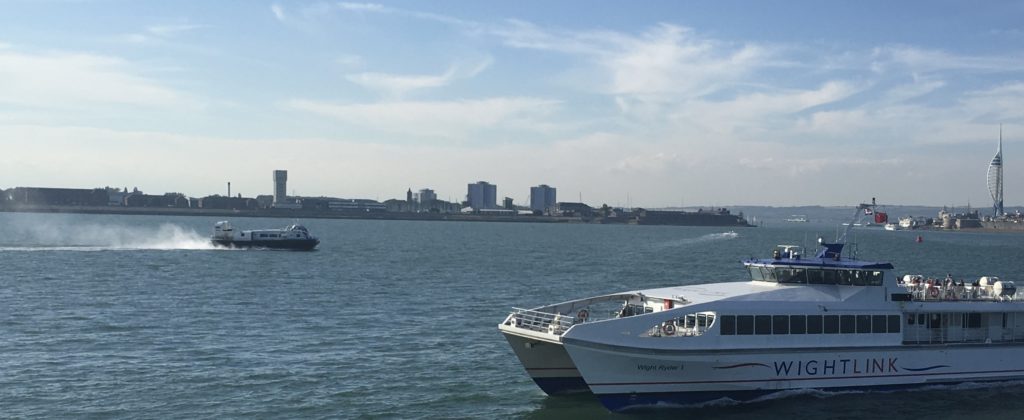
I’ve chosen Wightlink because it offers everything that Professor Christophers is concerned about. The WUG (WightLink Users Group) is an organisation established to represent the users of the Isle of Wight’s largest ferry company, WightLink. Whilst I don’t know very much about WUG, their website contains some extremely useful information regarding the private equity ownership of WightLink, a strategic infrastructure asset that is vitally important to the well being of everyone living on the Isle of Wight. For me this brings the arguments made by Professor Christophers to life and puts into context the lousy political decision making, and failure of scrutiny, of the 1984 legislation that led to the establishment of the WightLink of today, which is generally regarded by Islanders as an expensive and inefficient company that has for years exploited its captive market. Is this ringing any bells?
It should come as no surprise to learn that private equity firm Macquarie also owned WightLink. As with Thames Water, Macquarie treated Wightlink as a personal cash cow, milked for short term profits before being sold on to the highest bidder. However, Thames Water is a regulated entity and Wightlink, apart from the odd glance-over by the largely reactive MCA (Maritime and Coastguard Agency), is not. Wightlink’s customers are not protected in law, beyond the usual consumer protections. The users of most other privatised industries, including British Rail, had protections built into the legislation that permitted their privatisation. As we will see, the privatisation of SeaLink in 1984 (then part of British Rail) contained no such protections and provided no opportunity for public share ownership.
Wightlink is now owned 50:50 by private equity funds, Basalt Infrastructure Partners (the investment arm of former Wightlink owner Balfour Beatty Infrastructure Partners, who bought the company from Macquarie) and Fiera Infrastructure of Canada. The resulting corporate structure in which WightLink exists is complex. According to Professor Christophers this is a common feature of private equity owned assets. Pretty much everything about the WightLink situation is stereotypical of the worst aspects of private equity infrastructure asset management. Specifically, short termism in the form of extreme shareholder value maximisation. Devoid of any meaningful use of profits for capital expenditure and long-term inward investment, it delivers its service at an unjustifiably high cost to end consumers. There have been several attempts made in the past to attack this model on the grounds of monopolistic practices but so far these have all failed.
All roads lead to private equity
Given the importance of WightLink to the Island economy and the apparent lack of competition between the two ferry operators, the other being Red Funnel, also owned by private equity asset managers, it is not surprising that they come under intense scrutiny. The surprise should be that they have not been successfully challenged and continue to operate in the sole interests of their shareholders. The difference between WightLink and Red Funnel is their history. Red Funnel traces its origins back to the Cowes based Isle of Wight Royal Mail Steam Packet Company in 1820 and has been privately owned throughout its existence. The similarity is that they are both now owned by private equity infrastructure asset managers
To cut a very long story short, Red Funnel was privately owned until it was ‘rescued’ in 1989 by Associated British Ports Holding PLC, who eventually sold it for £71m in 2001 to J P Morgan Partners, the then private equity arm of US banking giant JP Morgan Chase. In 2004 JP Morgan Partners sold to a management buyout backed by HBOS for just £60m. In 2007, just moments before the collapse of the global banking system, HBOS and their management team sold the company to the Prudential’s private equity infrastructure company, Infracapital, for… more than £200m.
Ultimately the company is now part of an opaque private equity consortium involving the West Midlands Pension and the Workplace Safety & Insurance Board, an Ontario governmental quango (remember those!?). Ironically, Red Funnel was the subject of strike action by Unite members over pay in 2022. It is highly likely that Unite members elsewhere are members of the West Midlands Pension Scheme and their pensions support the private equity ownership arrangements at Red Funnel where pay and associated relations with the owners was deemed bad enough to justify strike action.
Wightlink’s history is completely different but ends in the same position of being owned by private equity asset managers so hated by Professor Christophers (and he’s not alone). The fact that both companies are owned in this way (privately) makes it hard to substantiate the claim that the two businesses operate as a monopoly, even if the end user experience might suggest that they do. After all, it’s competition that defines the ruthless wolf of Wall Street environment that private equity operates in. Isn’t it? So in that respect it’s hard to imagine a world in which it would act monopolistically given the ‘competition’. However, although monopoly is the game of capital and ultimately monopoly is where capital aims to be, in order to gain the economies of scale that drive down costs and push up profit margins, monopoly is usually achieved through merger and acquisition. The version of monopoly played by Red Funnel and WightLink is more a product of the captive market that characterises their customers.
For us to understand how all of this came about we need to know the history of Wightlink and the effect that privatisation had on it specifically, as opposed to the way that other public utilities, such as buses and railways were privatised, so please bear with me, because this part of the story might come across as rather boring as we head towards to its horrible conclusion.
WightLink was established as a private limited company in 1984, although to fully understand what happened, we need to trace its roots back to 1948 when the ships owned by London Midland & Scottish Railways, London & North Eastern Railways, Southern Railways and Great Western Railways, were taken into public ownership and British Railways was born. In 1965 this became British Rail and then in 1968 the shipping interests of British Rail were subject to an act of Parliament that established Sealink as the brand name of the British state owned ferry service. With the boats separated from the trains the stage was set for a future government to engage in some creative disposals, although in 1968 we were still 11 years away from it actually happening. Even in 1968 people were not complimentary about the state owned British Rail and many were already thinking ahead. The ferries seemed to be something of an anchor around the neck of British Rail and separating them seemed to make sense.
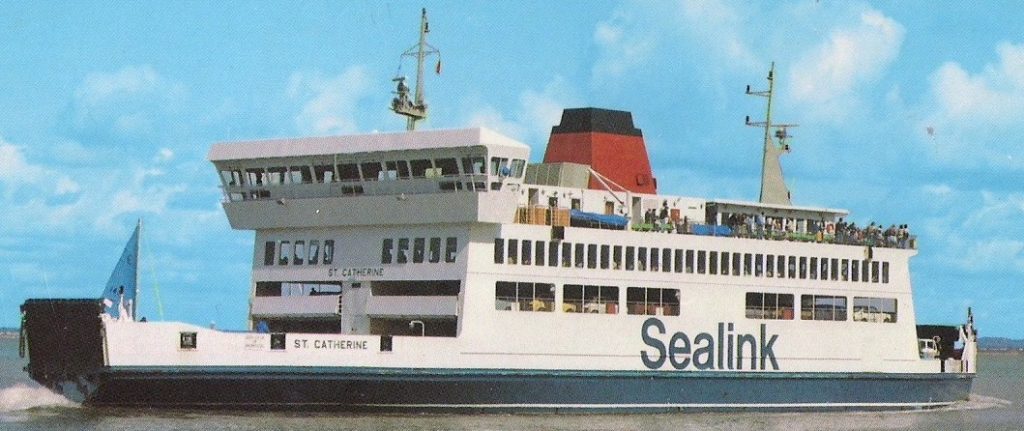
My Lords, as a weekly user of Sealink, I view with great pleasure the Government’s satisfactory sale
In 1979, the newly elected Conservative Government of Margret Thatcher, formed a private limited company called Sealink UK Limited, into which they transferred the ships formerly owned by British Rail under the Sealink name including the Isle of Wight ferries.
In 1984 the Government sold Sealink UK Ltd, together with their assets made up of 37 ships, 10 harbours and 24 routes, to the Bermuda based Sea Containers for £66m. This was highly contentious at the time as the value of Sealink was stated to be £170m, although £90m was possibly closer to the mark.
On a note of local interest, Lord Mottistone (David Seeley) who was the Great Great Uncle of the Island’s current MP Bob Seeley, is quoted by Hansard: ‘My Lords, as a weekly user of Sealink, I view with great pleasure the Government’s satisfactory sale. We have been waiting for it for a very long time. It will clear the air, and it seems to me, whatever noble Lords opposite may think, that in view of its past record, it is a good price. I think it is good, too, that the rail ferry linkage is to be continued. I like the sound of shares for employees in due course and profit-sharing in the meantime. I am delighted to hear that any national defence commitments will not be prejudiced. I am also glad to hear that the harbours are included in the sale, so that they will not be operated separately from the ships, which in my part of the world is very important indeed. I look forward to a more flexible approach to the provision of the various services, particularly in relation to the Isle of Wight. I hope that we shall benefit greatly from this sale in the future and I thank my noble friend very much for repeating the Statement.’
It’s a shame he didn’t provide more scrutiny given the fact that the promised floatation never happened. Hopefully his great great nephew will be more successful in challenging the current position, although I am personally not holding my breath at the chances of that. In any event, the company was subtlety renamed Sealink British Ferries Ltd and eventually sold by Sea Containers to Swedish Stena Line, privately of course. Significantly, the Isle of Wight ferries were not part of the deal, staying with Sea Containers under the name WightLink.
Sale not subject to any form of statutory ‘public service obligation’
Crucially, and entirely as a result of the then Conservative government’s actions in 1979, the sale of Sealink UK Ltd to Sea Containers was not subject to any form of statutory ‘public service obligation’ (PSO) arrangement. The privatisation of British Rail and other critical public infrastructure was and remains subject to these agreements. PSOs impose minimum standards and fare pricing restrictions. In the case of the railways, a PSO grant is paid to the rail operating companies by the Secretary of State for Transport. Without this protection the Isle of Wight was in big trouble. The Scottish Government has PSO arrangements in place for their ferry services but the UK Government has refused to do the same for English services such as those serving the Isle of Wight. Red Funnel and Wightlink are effectively free to operate how they please and change what they want, which is why they are being operated in the way they are, and their customers exploited they way they are. Understanding it, doesn’t make it any easier to accept though, does it?
According to WUG: ‘in 1995 the company was the subject of a management buy-in. CinVen and RBS’s leveraged finance division helped the Wightlink chief executive and his fellow managers buy the business from Sea Containers for £107.5m. In 2001 the management team bought out CinVen for £180m and it remained a private company until 2005, a brief four year period when ‘asset managers’ were not in control. It was then acquired by the world’s largest infrastructure focused manager, Australia’s Macquarie European Infrastructure Fund. Fares rose, late night services were cut to trim costs, and staff numbers were reduced. On 16 February 2015, Wightlink was sold by the Macquarie European Infrastructure Fund to Balfour Beatty Infrastructure Partners (BBIP) for a reported £230m. It is worth noting that the CEO’s salary that year was £714,000. In July 2016, Balfour Beatty exited BBIP, which became Basalt Infrastructure Partners. Basalt is the investment arm of Balfour Beatty, so this was an administrative disposal. In July 2018 The Times reported that, Wightlink, “A ferry operator that sails to the Isle of Wight could be sold for an estimated £300m. ”In May 2019, BBIP sold a 50% stake in the business to Fiera Infrastructure of Canada for an undisclosed sum.’
Basalt Infrastructure Partners and Fiera Infrastructure of Canada jointly own Arca Topco. This is the parent company of WightLink and four other companies all of which are ‘set up as separate legal entities giving the ultimate parent company, Arca Topco, protection from any operational or financial liabilities arising in any of the subsidiary companies’.
WUG go on to outline the financial history which supports the argument that the private equity asset manager set up the arrangement to do exactly what Brett Christophers claims in his book: ‘Asset manager ownership of essential physical infrastructures in transportation, energy, housing and other sectors generally results in deleterious outcomes, not least for the users of such infrastructure. Usage charges escalate rapidly; infrastructure maintenance and upgrades wane. At the same time, the asset managers themselves extract egregious riches, while using financial wizardry to minimise taxes paid’
‘Wightlink could significantly reduce fares in a regulated environment’
What WUG reveal of the WightLink financials are unsettlingly the same as what Professor Christophers believes is typical for most if not all private equity owned and managed infrastructure assets, According to the figures published on the WUG website, Wightink net profits between 2017 and 2019 were in excess of £50m, 90% of which was paid as bonuses and dividends, not reinvested. It’s worth considering that a 2016 Marine Accident Investigation report blamed a lack of maintenance for the failure of a mezzanine deck that fell on vehicles, injuring passengers and a member of the crew, when a supporting steel cable failed.
WUG report that ‘The last 10 years of available accounts, (up to 2022) shows an operating margin average of 20.4% on normal activities (ie excluding exceptional items as defined in the accounts). And that includes 2 years of COVID. The most recent year was 26.5%. Regulated transport companies in the UK (rail) are effectively capped at 4-6% and they have minimum service requirements on top. Wightlink could significantly reduce fares in a regulated environment. Most business observers will say margins that high are only achieved with significant competitive advantage (say technology or brand), or in a monopoly / oligopoly.‘
This is all the more disturbing when one considers the 2020 Covid fuelled consultation that Wightlink had with its staff after they declared a £20m loss as a result of reduced ticket sales during the pandemic. The aim of the consultation was to get employees to agree to economies that would help to protect the business from future pandemic style risks. In other words they wanted to protect their massive shareholder value at the cost of every other stakeholder. The main union at WightLink, the RMT, reported that ‘at the height of the pandemic (April to September 2020) employees loaned 20% of their salary and gave up terms and conditions for 6 months to allow the company to keep trading’
According to WUG, WightLink received Government help amounting to approximately £7.3m between 2021 and 2022, directly as a result of the pandemic. This together with an insurance payment of more than £9m in 2021, plus the savings they achieved with the help of their employees 20% salary sacrifice in 2020, allowed the board to propose a dividend in June 2022 of £8m.
WUG report that in the last 6 years Wightlink have benefited from additional Government help in the form of HMRC tax rebates amounting to £6.8m comprehensively wiping out their tax liability which since 2017 amounts to just £4.6m.
Professor Christophers says ‘What asset-manager owners of essential infrastructure actually do, how, and with what consequences for society, has long been hidden from public view. “What we do is behind the scenes” the head of one leading such firm once said to the Financial Times. “Nobody knows we’re there” ‘
So, this is where it ends, for now. The first and last Welsford Report of 2023. Infrastructure has been an important subject for us this year. Its sensitivity to changes in interest rates and high levels of impact in relation to the transition to net zero have caused us to discuss it at every single investment committee meeting held in 2023. This report has taken a rather different approach, looking instead at how different models of infrastructure ownership affect the long term outcomes for shareholders and other stakeholders.
If you haven’t skipped to the end, but got here through dogged endurance reading, then well done on your stamina and your desire to know more! I hope it was worth your time.
Chris Welsford
31/12/2023
